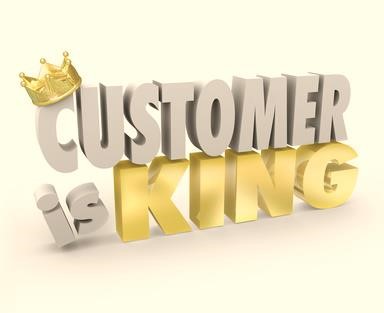
Believing you understand your customers’ needs can differ vastly from what they actually want. In the end though, the customer gets what the customer wants, whether from you or your competition
As I thought about an appropriate topic, I was reminded of the importance of starting with your customer. No matter what your company objectives, you must understand your customer.
There are several areas to consider; however, starting with these can never steer you wrong: 1) Determine what is important 2) Prioritize. 3) Translate to a sales forecast.
First and foremost, determine what is important to your customer. Do not fall into the trap of thinking about which features, benefits, services etc. you think are important to your customer. Instead, find out. Ask your customer questions. Find out what he would be willing to pay for. Certainly, if he is willing to pay additional for quick delivery (as an example), it means that fast turnaround is valued. Dig further. Many customers will think everything is important; however, can they leverage the advantage(s) if you provide it to them? Find out more about their capabilities. Are they willing to invest resources? Tailor your products and services to what will provide the largest perceived value to your core customers.
Next, prioritize. You are likely to find out that your key customers have multiple requirements for success. Which are most important? Which are within your capabilities? Which align with your strategy? Do you have resources in place and trained that can help you with the requirements? A simple ABC method can work wonders. Don’t think about how easy it will be for you to achieve the requests. It doesn’t matter if your customer doesn’t truly appreciate them. C’s are a great example of this type of wasted effort. Instead, put yourself in your customers’ shoes. Pick a select few priorities. Too many is a recipe for disaster. My most successful clients have no more than 3 key “A” priorities / areas of focus at once.
Third, translate what you know into a sales forecast. SIOP processes (sales, inventory, and operations planning) can yield substantial results for you – and your customer. It starts with your key customers’ sales forecasts. How frequently will your customers’ order? What is the likely order size? What is the volume and/or dollar value you think will occur? How does that compare with last year? Last quarter? Does it make sense? Can you collaborate so that you place your customers’ orders for them in a way that achieves a win-win? For example, several of my clients have planned what to send to their key customers with programs called VMI, collaborative ordering, replenishment, etc. The results can be substantial – better service, quicker deliveries, lower inventory levels, better efficiencies, etc. What could be better than having the information to develop your key customers’ forecasts for them?
One of the tenets of lean is to start with the customer. The same holds true for SIOP. Undoubtedly, starting with your customer in mind will get you off to a “great” start. Best case, you can deliver significant benefits for your customer at improved margins for your company. Worse case, you’ll be starting in a better position with an understanding of what your customer wants. Asking is painless. Pick up the phone. Visit your customer. Ask and listen. A few simple techniques, and your business will be better prepared to delight your customer and deliver bottom line business results.
Did you like this article? Continue reading on this topic:
SIOP (Sales Inventory Operations Planning): Creating Predictable Revenue & EBITDA Growth


